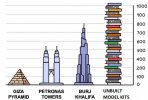Tony,
I really
really recommend you don’t do that.
If you fix the middle axle, it must not be in contact with the rails or your loco will wobble like a nodding dog on a see-saw. If you do that, the loco will in effect be an 0-2-2, with haulage capacity to match.
if you can balance it without the -2 trailing axle, it will work, but the cab & bunker will need to be very light, and the smokebox filled with depleted uranium to get it to balance.

This is the underside of my Springside 48xx. One of the equalisation beams is just visible - there’s an highlighted edge just below (well above) the pick-up for the front left wheel. The beams are thin brass, a rectangle with a pair of “lumps” sticking out below, into which the bearings are soldered, the frames are slotted to allow the bearings room to rise and fall. The equalisation bearings pivot on the brass rod near the top of the frames and visible just behind the brake cross beam.
The trailing axle rocks on the central fulcrum, the bearings run in slots in the Springside frames.
There are pickups on the inside of the flanges on the trailing axle, so that’s not an issue, and it has very adequate haulage capacity.
it really isn’t much extra work, and if you do it now, you won’t have to do what I did - take it all apart and fix it, because it was truly useless as Springside designed it.
enjoy, either way
Simon













